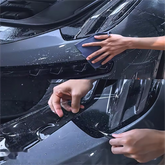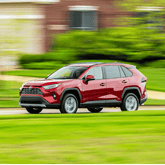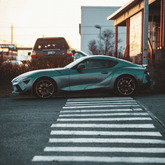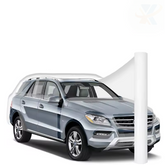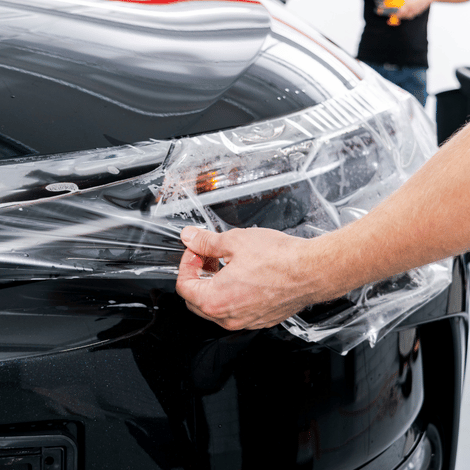color chaTransform Your Ride with Color Change PPF: The Ultimate Guide to Paint Protection Filmnge ppf
In the car world, keeping your vehicle looking good is key. An amazing new thing called Paint Protection Film (PPF) does this more than ever before – it doesn’t just save your car’s finish but lets you change its color as well. This manual examines color change PPF in detail: why should one use it, and how can it be applied and maintained properly? The readers will understand that with such technology, their ride can look completely different while being shielded from weather conditions, scratches, and everyday wear and tear. Our goal is to help people learn about all the things they need to know if they want to protect their cars better and make them cooler at the same time.
Why Choose Color Change PPF?

What is a Color Change Paint Protection Film and Color Change Vinyl and Color Change Vinyl?
Color Change Paint Protection Film (PPF) is a specialized vinyl cover that changes the color of a vehicle while protecting it. It sticks onto a car’s surface, shielding it against environmental pollutants, UV light, and physical scratches, among others, besides allowing color alteration without permanently painting the car as typical paints would do. The film consists of different coatings, such as a clear coat, which protects the paint from fading due to sunlight exposure, and a pigmented layer, enhancing its look. Moreover, these layers can be applied or removed easily whenever one wishes to. This multi-purpose item lets motorists personalize their cars’ appearance while keeping the original paintwork safe underneath.
Benefits of Color PPF vs. Traditional Paint
Color Change Paint Protection Film (PPF) has many advantages over conventional paint systems. Initially, PPF is better at protecting against scratches, chips, and UV damage, which are crucial in preserving a vehicle's worth as time goes by. PPF absorbs impacts, unlike paints that can be easily damaged, thereby preventing surface blemishes underneath it. Moreover, PPFs can be reversed; an owner can change colors or remove films without affecting the original paints, thus giving room for customization options. In addition to being less time-consuming during installation processes compared to full re-sprays on cars’ bodies, cosmetic PPFS may improve appearances since they come in different finishes. Finally, most modern self-healing minor scuffs ensure perpetually glossy surfaces with low upkeep required, which is far better than traditional coatings.
Is Color Change PPF Right for Your Vehicle?
Knowing whether or not to use Color Change Paint Protection Film (PPF) on your car is mainly based off a few things such as what you find visually appealing, how often you drive it and what you hope to achieve with its care in the long run. If what you’re trying to accomplish is making your vehicle look nicer while guarding against things that can harm it from outside like dirt or sun damage then yes, this would be great for that! This type of product works especially well for people who park their cars frequently in cities where there are lots of other drivers around all day; some places just have more traffic than others which makes accidents more likely happen. Another unique trait about these films is that they allow one to change colors on their cars without making any permanent modifications – if only temporary changes are preferred too. However, having them applied professionally is still an upfront cost since doing this yourself might not give optimal results. On the whole, if safeguarding against different types of harm, versatility, and retention value stand out as important considerations, then perhaps Color Change PPF could work wonders for you.
Understanding Paint Protection Film

How Does Paint Protection Film Work?
Paint Protection Film (PPF) combines cutting-edge polymer technology and mechanical aesthetics. The film comprises a top layer that adds shine and protects against UV rays that may cause the paint underneath it to fade or oxidize over time. Upon application, PPF sticks to the surface of your car seamlessly, thus forming an impenetrable shield from scratches as well as chips caused by road debris, such as chemicals, among others, while also protecting against other types of damages brought about by environmental elements. Most self-healing PPFs can actually fix themselves when subjected to heat, thereby making them return back to their original conditions after being scratched a little bit with anything rough like sandpaper during the installation process so that they appear brand new again. It is not just about preserving finish but also improving durability, hence becoming ideal for any vehicle owner who values his/her car’s appearance in the long run.
Common Myths About PPF Debunked
- PPF is only for new cars: Many think that Paint Protection Film is only good for new cars. But it can also be used on older vehicles which need their looks restored and still shielded from environmental damage.
- PPF is too expensive: Even though there is a cost of installing PPF at first, the savings over time due to reduced paint repairs and maintenance outweighs the upfront price making it cheap in long term.
- PPF discolours over time: Nowadays, UV resistant PPFs are manufactured thus lowering chances of yellowing or other forms of discoloration. This guarantees clarity and protectiveness throughout its life cycle of the film.
- PPF is difficult to remove: It is wrong to believe that under professional removal, top quality Paint Protection Films can cause no harm to the underlying paint thereby preserving finish on vehicles.
- Not all PPFs are the same: There are significant differences in quality levels among various brands selling PPFs within the market, so not all are equal. More expensive films often provide better protection, self-healing ability, and aesthetic appearance than cheaper ones.
PPF vs. Vinyl Wrap: Which is Better?
While comparing vinyl wraps and paint protection film (PPF), there are several aspects that distinguish them as the best option, depending on what one wants. In most cases, PPF acts as a shield from rock chips, scratches, or any other contaminants that may tamper with the original painting of a car. It is designed to last long and can correct itself when it comes into contact with slight scrapes which makes it perfect for those who love taking care of their cars over an extended period.
Vinyl wraps, on the other hand, are commonly used for decorative purposes. They come in various colors, finishes, and textures, thereby providing an individual with limitless design options that can entirely change the appearance of his/her vehicle. Nevertheless, vinyl wraps do not offer similar levels of safeguarding as PPFs do, and this may necessitate frequent replacements.
In conclusion, if your aim is to protect the factory paint while keeping up with the resale value, then PPF should be chosen over anything else. Conversely, if a person wants to give their car bolder looks using dramatic designs then they may opt for vinyl wraps instead. Ultimately one’s decision will largely be determined by what they want to achieve with their vehicle’s aesthetics vis-à-vis its safety needs.
The Installation Process of Color Change Paint Protection Film

Steps for Dry Installation of Color Change PPF
- Surface Preparation: Completely clean the surface of the vehicle with a soap that has a pH balance and make sure there is no dust, dirt or grease left on it.
- Cutting the Film: Measure and cut PPF to size with extra material around the edges for adjustment.
- Positioning: Put film on surface gently without removing backing paper yet. Line it up correctly.
- Squeegee Application: Use squeegee from center outwards to press down film while pushing air bubbles out at same time. For better results try using wet installation method.
- Trimming Excess: Once film is stuck down trim away excess neatly using sharp blade so that you get clean finish along edge lines.
- Final Inspection: Inspect installed area for any faults or air pockets that may have occurred during process. If necessary, use a heat source to help manipulate the positioning of vinyl until satisfied with the end result.
- Curing Time: Allow film to cure as recommended by manufacturer before exposing to severe weather conditions etc.
Professional PPF Installation vs. DIY
While choosing between professional PPF installation and a DIY approach, there are many things that should be considered. Typically, professional installations guarantee higher accuracy levels and expertise which reduces risks such as bubbles, creases or misalignment. Professionals have better tools at their disposal along with the best materials and years of experience; this will ensure that it lasts longer than any other finish would do while still looking good. In addition to all these benefits, reputable installers offer warranties, so if anything goes wrong after installation, there is nothing to worry about for car owners.
On the flip side, though, you can also choose to install it yourself, which might save some bucks, especially when one has skills in doing things manually and does not want to pay somebody else’s wages. However, this may take much time because of learning how exactly this thing should be done before actually doing them. Hence there being risks involved through incorrect application leading to poor outcomes like premature wearing out or damaging your vehicle’s paint job. So, although many professionals recommend going for service providers, some people may find the DIY method more convenient since they believe it is okay, provided that there is proper inspection plus repair by experts who deal with PPF all the time.
Costs Associated with PPF Installation
The prices for putting on Paint Protection Film (PPF) can greatly differ depending on different factors such as type of vehicle, complexity level of installation, and quality of materials used. Full vehicle coverage costs around $1,500 to $4,000 on average per professional installing it with this price depending on the size of the car and design features. Partial coverage, which only covers high-impact areas like the hood, front bumper, or side mirrors, may cost between $500-$1500. Additionally, there may be higher charges for better films that come with self-healing properties or improved UV protection abilities. It is also good to think about post-maintenance costs in terms of years because they might affect total spending towards PPF. When considering costs, one should request exact quotes from well-known installers so that everything is clear and aligns with budget expectations, hence not having any surprises later on. This involves knowing the benefits and unique features provided by protectant film products too
Gloss and Ultra-High Gloss Options for Color Change PPF

Choosing Between Gloss, Matte, and Satin Finishes
Thinking about finishes for Paint Protection Film (PPF), there are three options: gloss, matte, and satin, each with its own aesthetic and functional properties. Gloss finishes give a shiny look that makes colors look deeper and more vibrant on the car; this is why it is most commonly used by those who want their vehicle to look polished in the traditional sense of the word. Conversely, matte paints have no reflectivity at all, which gives them an understated modern appearance but can also present cleaning challenges since they show dirt and fingerprints easily, requiring special methods for cleaning. Satin occupies a middle ground between these two extremes by offering some light reflection without as many upkeep issues associated with high levels of luster as those found in typical glosses. Ultimately people must choose what they like best based off how often things need cleaned or other factors such as selling price for different types among different parts within automotive market segments may affect appeal levels. Everyone should always seek advice from experts while examining examples because this helps people find out information which aligns both with their vision for a particular vehicle as well as practicalities involved given its use over time by an individual owner.
Enhancing the Gloss of Your Color PPF
There are a number of things that can be done to make Color Paint Protection Film (PPF) shinier which in turn makes it look better over time. First, applying a high-quality ceramic coating is important since it protects against ultraviolet rays, increases shinyness, and reduces chances for fade or dullness. It is important to regularly wash with pH neutral soaps as they do not corrode surfaces but remove contaminants that could otherwise reduce gloss levels. Moreover, drying should be done using a microfibre cloth that does not scratch while maintaining the highest possible shine for films. Lastly, the occasional use of specific detail sprays meant for PPFs helps bring back life and brightness without compromising their integrity towards these ends. These steps ensure both aesthetic appeal and long-term protection properties on PPF materials.
Maintenance Tips for Ultra-High Gloss PPF
In order to make Ultra-High Gloss Paint Protection Film (PPF) last longer and work better, one must establish a continuous care system for it. The use of such products may also ensure the strength of the film. To start with, do regular check-ups so that you can detect scratches, chips, or lifting of the film, which should be dealt with immediately to prevent more damage from occurring. When washing, it is recommended that you use a two-bucket method in order to avoid scratching the surface with contaminants; one bucket should contain soapy water, while another should be filled with rinse water. Use a soft wash mitt meant for delicate surfaces on this type of material too. Also, don’t use high-pressure washers or automatic car washes that have brushes because they might affect PPF integrity. For drying purposes always go for clean plush microfiber towels as they help reduce swirl marks risk during this process – which is essential if we want our PPFs protected well so they can keep looking nice and shiny like new all year round! You may consider applying specific PPF maintenance products from time to time so as to restore glossiness as well as protect against environmental factors. These are some tips that if followed by owners will maintain both functional benefits and aesthetic value inherent in Ultra-High Gloss PPFs
Durability and Protection of Paint Protective Film

How Long Does Color Change PPF Last?
The life of color change paint protection film (PPF) is usually around 5-10 years, but this can vary depending on things like where it is put up, how much sun, and the kind of job that was done. If cared for properly through regular washing with mild soap or cleaners made just for this purpose then a person can add many more years onto its life span. It’s also good to know that you should follow what the maker says because some cleaners may harm these materials permanently, so they no longer work well as a shield against fading or dirtiness caused by sunlight exposure over time – always keep them clean!
Ways to Maximize the Durability of Your PPF
Apparently, to make them last long, Paint Protection Films (PPFs) need to be handled with some care. The first thing that should be done is washing the vehicle on a regular basis by use of pH balanced car shampoo which is light enough to remove dirt without damaging the film. Moreover, parking under direct sunlight for extended hours should be avoided since this causes discoloration and wearing off due to exposure from UV rays over time; if possible consider using a car cover. This ensures overall PPF protection and extends its life span. It’s also not recommended that one uses abrasive cleaning tools or waxes which can destroy the film’s surface. Similarly, scratches or damages should be dealt with immediately by applying touch up solutions meant for PPFs so as not compromise on its safety features. One should also plan for professional inspection and maintenance once in every twelve months at least because it helps in early detection of problems hence saving more years for your PPF. Alongside this, environmental threats can be countered through application of protective films products.
Self-Healing and Scratch Resistance Features
Paint Protection Film (PPF) possesses self-healing properties, which are the fruit of its high level of engineering; therefore, when exposed to heat, minor scratches, and swirl marks fade away with time. This is simply enabled by the use of thermoplastic urethane in making the film material, which implies that it becomes soft on heating so as to restore itself smoothly back to an unmarred surface. It behaves like color-change PPF does under similar conditions hence this quality also. In terms of preserving finish, scratch resistance is one more essential feature. Indeed, good quality paint protection films can resist not only light scratches but also those caused by gravel impacts and road debris, among other environmental factors, thus ensuring that underlying paint remains intact always. Not only does self-healing combined with scratch resistance increase the aesthetic life span for cars, but they also contribute greatly towards their future resale value. Proper installation as well as regular maintenance needs to be done in order for the film to achieve the best results possible. You can add a layer of safety to your PPF by using protection film products .
Innovative Varieties of Dynamic PPF

Exploring Color Shift PPF Options
A new technology in car design and protection is the Color Shift Paint Protection Film (PPF). This unique covering changes colors when the light hits it or when you look at it from different angles. The multi-dimensional look is very eye-catching while protecting your car’s paint job at the same time. Manufacturers have come up with many different varieties of color shift films, often adding special pigments and reflective materials that make them even more refractive to light. These films still have all the traditional qualities of regular PPFs but allow for personalization like no other.
The first thing to do is pick out a good quality film that won’t fade or peel off easily. There are plenty of suppliers who sell these kinds of products, so find one that has been around for awhile and has good reviews from customers about how well they hold up over time. It’s also important to get professional help installing this stuff because if bubbles form underneath or edges don’t line up right then none of those cool visual effects will work properly nor will any part be protected. But once everything is set in place just remember that like anything else on your vehicle; dust, dirt, bird droppings etc., should be washed off gently with water and soap every now and again so as not to ruin its overall effectiveness or appearance which can last for several years if cared correctly.
Benefits of Ceramic Coating on Color Change PPF
When you apply ceramic coating to color change paint protection film (PPF), it improves the look and performance of the car’s exterior. Most importantly, the ceramic coating acts as another line of defense against dirt, UV rays, bird droppings, and other environmental contaminants that can damage both the film itself and the underlying paint job on your vehicle. Not only does this shield extend the lifespan of PPF, but it also keeps it working well while looking good.
Another thing about these coatings is that they are extremely hydrophobic so water and grime bead up then roll off easily. This means that color change ppfs stay cleaner for longer periods thereby reducing how often you need to wash or maintain them. Additionally, glossy finish achieved with ceramics adds more depth into visual appearance of any colour shift effect which makes cars even more attractive.
In conclusion, what this means is when one combines a ceramic coat with colour-changing films, maximum protection is provided while at the same time enhancing aesthetic value, hence ensuring durability doesn’t outweigh individuality as far as investments go. Therefore, if one wants these advantages to last throughout their life span, then regular care together with re-application should be done on such coatings, thus preserving films in the best conditions alongside vehicles’ appearances at all times.
Carbon Fiber and Metallic Look PPF
Carbon fiber PPF and metallic look paint protection films (PPF) maintain all the protective advantages of PPF while giving unique aesthetic improvements. The sleek, futuristic appearance of real carbon fiber material is imitated by Carbon Fiber PPF appealing to car lovers who have a taste for this kind of thing. Apart from defending the car’s paint against scrapes, chips, and other environmental hazards; this film creates an exceptional look that can transform the overall style of any vehicle.
Conversely, metallic-look PPFs are designed with finishes that produce glossy shines similar to those found in many expensive cars’ paintings. Reflective properties possessed by metals such as gold or silver can increase brightness levels on automobiles leading to more visually compelling results when viewed under different light settings. This ranks among the most important cosmetic benefits offered by PPFs. Similarly to its carbon fiber counterpart; Metallic Look PPFs provides strong layers of protections while leaving behind attractive appearances.
Any person can use both options since there are different finishes available that suit various vehicles, thus enabling everyone to customize their own ride according to his/her preference as they also protect it from daily tear and wear situations. However, special care should be taken during regular maintenance coupled with professional installation services so as to achieve maximum performance out of these specialized films because failure may lead to reduced lifespan
Reference Sources
Frequently Asked Questions (FAQs)

Q: What is Color Change PPF?
A: Color Change Paint Protection Film (PPF) is a protective film for your car that allows you to change the color of your vehicle while also protecting its paint. It acts as two layers in one by giving the exterior bodywork a new hue and safeguarding it from damage.
Q: How is Color Change PPF different from traditional paint protection?
A: Traditional paint protection consists of a clear bra or clear PPF film that shields against scratches and road debris. On the other hand, Color Change PPF has an additional colored layer that can be used to change the car’s appearance without compromising on strong defense capabilities.
Q: What are some advantages of using Color Change PPF?
A: The benefits associated with Color Change PPF include protection for the original finish, aesthetic enhancement through different colors, and shielding off UV rays, minor scuffs, and stone chips using FlexiShield or Wrap Fresh, among other products. These products may have self-healing abilities and hydrophobic properties, in addition to being long-lasting films in most cases.
Q: Can any vehicle have Color Change PPF installed?
A: Yes, almost all types of automobiles can be fitted with this product because it is highly adaptable and designed to cover various surfaces found on cars thus allowing for seamless customization.
Q: How many years does Color Change PPF stay on?
A: The average lifespan ranges between five and ten years, depending on quality levels and maintenance practices. Reputable brands like FlexiShield tend to offer extended durability periods.
Q: Does Color Change PPF provide UV protection?
A: Yes, a wide range of Color Change PPF products offer UV protection. This not only helps to maintain vibrant new colors but also prevents the original colors underneath from fading.
Q: Can you get different finishes with Color Change PPF?
A: Absolutely! Color Change PPF is available in many finishes such as matte, gloss, and satin which gives you more options when choosing how you want your vehicle to look like.
Q: What does the self-healing property mean in terms of Color Change PPF?
A: The self-healing property allows small scratches caused by daily use or washing to disappear after being exposed to heat—sunlight or warm water, for example. This feature is usually found on more expensive types of films with a thermoplastic polyurethane top coat.
Q: Is it possible to remove or replace Color Change PPF without damaging the original paintwork?
A: Definitely, yes – one of the major benefits of using this kind of product is that it can be safely removed or replaced without harming the vehicle’s factory finish at all. That’s why it works well for both temporary and permanent installations considering various advantages offered by paint protection film technology for cars.
